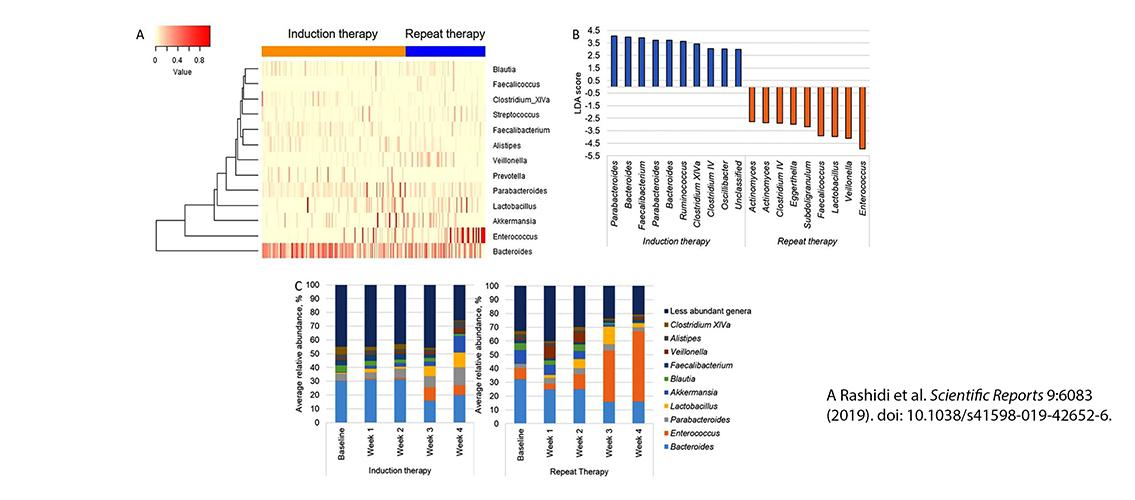
Patients with acute leukemia (AL) undergoing intensive chemotherapy treatment are also treated with multiple antibiotics. This results in the patient’s gut microbiome being severely affected, a condition called “dysbiosis,” which results in unpleasant and possibly dangerous side effects. Since many AL patients must undergo repeat treatment, it is possible that the injury done to the gut during initial treatment may affect dysbiosis patterns during the repeat therapy.
MSI user Armin Rashidi (assistant professor, Medicine) led a research team that included MSI PIs Christopher Staley (assistant professor, Surgery; BioTechnology Institute) and Gary Dunny (professor, Microbiology and Immunology; BioTechnology Institute) and other researchers for a recent paper in the journal Scientific Reports. The researchers studied the microbiomes of AL patients undergoing initial and repeat therapy, with a goal of determining how the initial therapy might influence dysbiosis in subsequent chemotherapy courses. The study showed that patients undergoing repeat therapies tended to have much larger enterococcal populations (Enterococcus faecalis and E. faecium) than normal. These bacteria cause a large number of hospital infections, so controlling them should reduce morbidity and mortality among patients. The results indicate that using methods of restoring the gut microbiome in patients about to undergo repeat therapy merits further study. The researchers used MSI for processing and analyzing sequence data.
The paper can be found on the journal website: Armin Rashidi, Thomas Kaiser, Robin Shields-Cutler, Carolyn Graiziger, Shernan G. Holtan, Tauseef Ur Rehman, Justin Wasko, Daniel J. Weisdorf, Gary Dunny, Alexander Khoruts, Christopher Staley. 2019. Dysbiosis Patterns During Re-induction/Salvage Versus Induction Chemotherapy for Acute Leukemia. Scientific Reports 9:6083. doi: 10.1038/s41598-019-42652-6.
Professor Rashidi accesses MSI resources as part of Professor Staley’s MSI group. This group uses MSI for projects that study the intestinal microbiome, especially how changes can impact disease and how microbiota-based therapies might prevent them. Co-author Thomas Kaiser is also a member of the Staley group. Professor Dunny uses MSI for studies of the genetics of E. faecalis. Previous research by the Dunny group appeared on the MSI website in October 2015: Understanding Pathogens and Biofilms.
Image description: Composition of microbial communities during induction and repeat therapy. (A) Heat map showing genera relative abundances. (B) Linear discriminant analysis (LDA) plot highlighting differentially abundant taxa in induction therapy vs. repeat therapy samples. (C) Progressive expansion of Enterococcus (more prominent in repeat therapy samples). Only the 10 most abundant genera (averaged across all samples) are shown; the remaining taxa are combined as “less abundant genera”. Image and description from A. Rashidi et al. Scientific Reports 9:6083 (2019). doi: 10.1038/s41598-019-42652-6.
posted on June 26, 2019